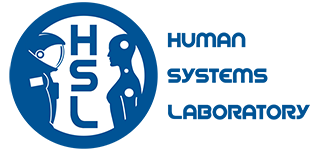Hi HSL,
This coming Monday, we will have 2 talks, 30-minutes-long each. First talk is by Rachel Bellisle, followed by Tara Nibhanupudy (Jenks Lab, MEEI). Details below.
HSL Meeting
Monday, April 24, 2023
12-1pm, Room 31-270
Zoom link: https://mit.zoom.us/j/99313053821
Talk #1:
- Speaker: Rachel Bellisle
- Title: Skinsuit ISS Experiment
- Abstract— The Gravity Loading Countermeasure Skinsuit (GLCS or “Skinsuit”) is a musculoskeletal countermeasure for spaceflight, consisting of a skin-tight garment that applies a vertical load from the shoulders to the feet. The suit aims to mitigate musculoskeletal deconditioning during prolonged exposure to microgravity by simulating some of the effects of Earth’s gravity (1G). MIT and international collaborators have previously tested the GLCS through experiments in 1G, partial gravity analogs, parabolic flights, and International Space Station (ISS) missions. An upcoming study with one participant on Axiom Mission 2, a 10-day ISS mission, aims to evaluate comfort, function, and several physiological effects of the GLCS in 1G and microgravity in low-earth orbit.
Talk #2:
- Speaker: Tara Nibhanupudy (Jenks Lab, MEEI)
- Title: Computational Models of Human-Vehicle Systems
- Abstract
- INTRODUCTION: Spatial disorientation is a leading cause of aviation fatalities. These incidents often arise from interactions between vehicle dynamics and neural processes underlying pilot behavior. Increasing our ability to predict/prevent incipient adverse events during human-aircraft interactions could substantially mitigate risk. To address this problem, we aimed to 1) develop a closed-loop cybernetic model including state-of-the-art spatial orientation and motor-control components, and 2) validate and refine the model using human experiments. METHODS: Closed-loop “comprehensive models” were developed for rotation control with and without changing orientation relative to gravity (Matlab/Simulink). These incorporated validated spatial orientation, motor control , and vehicle models. Subjects (n=9) ages 21-38 sat in a motorized rotary chair (Neurokinetics) and used a joystick to control chair motion, with instructions to minimize chair velocity while experiencing a pseudo-random sum-of-sines “disturbance” (0.004-1.7 Hz). Model predictions included gain and phase values averaged across subjects as a function of disturbance frequency. Experimental data was used to enhance and tune the model. RESULTS: The closed-loop model predicted wide variations in task performance by frequency. In particular, the models predicted that human performance was mediocre for rotation control about an Earth-vertical axis in the dark (gravitational cues did not provide useful information about task performance). Human experimental data closely followed the frequency response predicted by the model. The most effective nullification was seen to occur in a small band of medium-range frequencies (0.01-0.1 Hz), due to combined dynamics of high-pass filter vestibular perception low-pass filter motor control. Innovations that improved model predictions were 1) addition of a decision-making element reflecting the corruption of sensory feedback by neural noise 2) tuning of parameters of pilot effort (Kp) and the central nervous system (CNS) delay. CONCLUSIONS: The model accurately predicts the human experimental frequency response. These novel models of human-vehicle systems increase understanding of the dynamic interaction between vehicle states and human sensorimotor systems. With this, performance decrements in vehicle control, e.g., during spatial disorientation or weightlessness, can potentially be more accurately predicted/mitigated. Multi-axis rotational tasks remain to be characterized.
- Speaker Bio: Tara Nibhanupudy is a medical student at Boston University School of Medicine, class of 2025. She received a bachelor's degree in medical sciences with a medical anthropology minor from Boston University. Her current clinical interests include otolaryngology, aerospace medicine, preventative medicine, and nutrition. She is currently taking a research year prior to clinical rotations, resuming April 2023. Her primary research at Massachusetts Eye & Ear is focused on the vestibular system and the role spatial orientation and multi-sensory integration play in human control performance within cybernetic systems.
